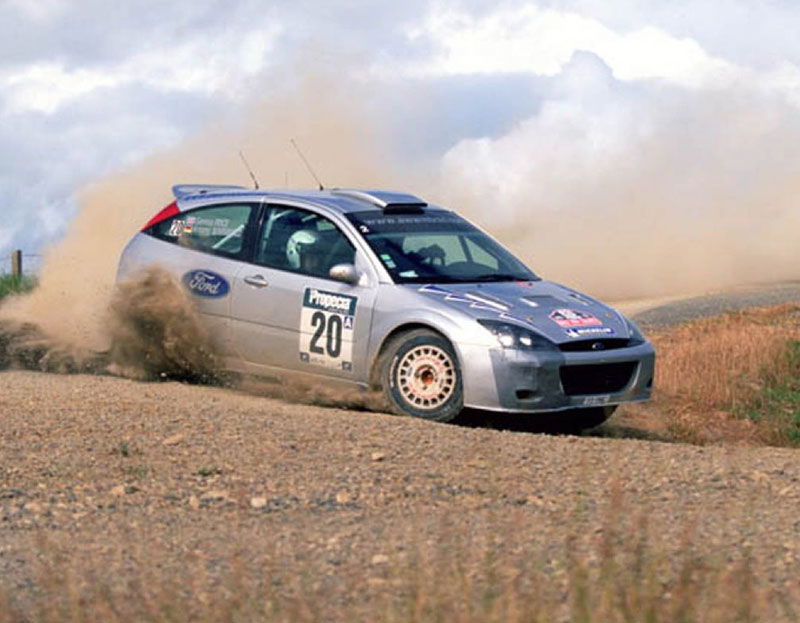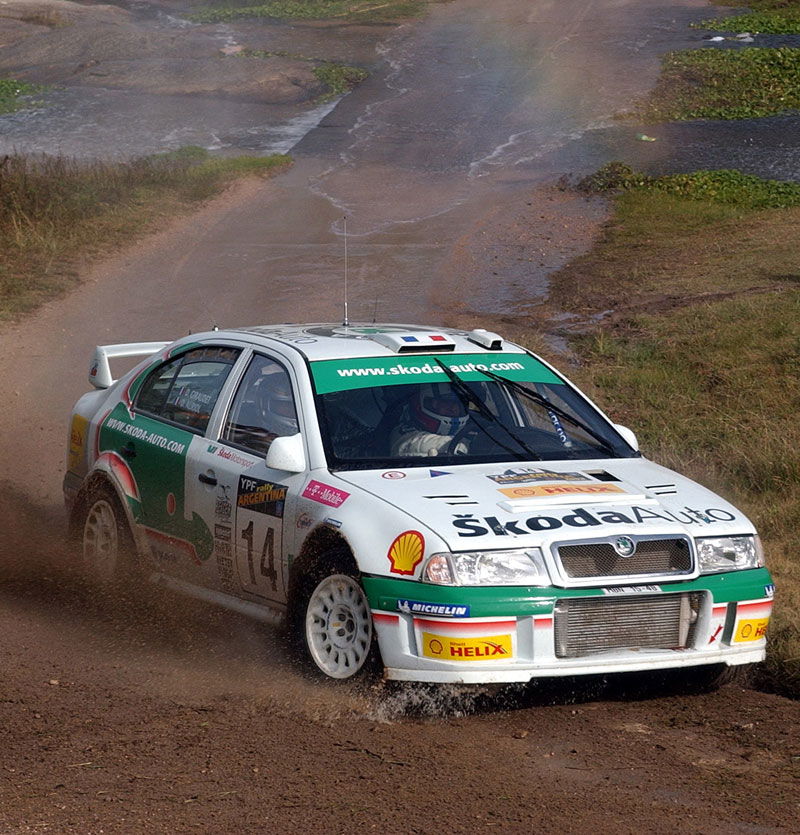Q&A: Bruno Paugam (Peugeot).
The rough stages of the Acropolis Rally are reputed for the punishment to which they expose cars, and particularly their suspensions. Bruno Paugam is the man in charge of Peugeot Sport's suspension, steering and brakes laboratory...
Q:
Bruno, Peugeot makes its owns shockabsorbers. This is something of an original approach...

The rough stages of the Acropolis Rally are reputed for the punishment to which they expose cars, and particularly their suspensions. Bruno Paugam is the man in charge of Peugeot Sport's suspension, steering and brakes laboratory...
Q:
Bruno, Peugeot makes its owns shockabsorbers. This is something of an original approach...
Bruno Paugam:
We are effectively the only manufacturer that produces its own shockabsorbers which are made at our Sochaux plant. It's the same team, made up of ten or so people, that designs prototype shockabsorbers for future road cars and the units we use on the 206 WRC. These are sent from Sochaux to V?lizy where they are fitted.
Q:
In what ways do rally shockabsorbers differ from those on road cars?
BP:
The fundamental design and production are similar and are based on a Peugeot-patented technology. Rally shockabsorbers are submitted to different types of constraint however. They have to cope with enormous shocks, often at high speed, and the dimensions of the mechanical components are accordingly bigger. They work especially hard on gravel events where they get hotter, so we add extra reservoirs to double the amount of fluid that flows inside them to improve cooling. Another important difference is that a standard shockabsorber has to be an all-round product, while the units employed in rallying are designed for a more specific purpose. There are four basic variants: one for asphalt, one for 'smooth' gravel, one for the sort of 'rough' gravel you get in Greece, and finally one for extreme conditions, such as the former Safari Rally in Kenya.
Q:
How do you set about choosing which variant to run on a given rally?
BP:
When possible, we begin by consulting the database compiled after pre-event testing, although on-site test work is now of course outlawed before rallies that take place outside of Europe. In Argentina, for example, we opted for the 'smooth gravel' option which was apparently the right choice. If the weather outlook is unsettled however, you have to have two sets of shockabsorbers available because the decision to employ such specific units means we cannot modify their internals. A given shockabsorber specification will function perfectly well with a certain ride height, but not so well, perhaps not at all even, if the travel is different. To give an idea of the rate at which our development moves on, the set-up defined for the forthcoming Acropolis and Cyprus Rallies is the 332nd different set-up - all types of shockabsorber and all drivers included - since the debut of the 206 WRC on the 1999 Tour of Corsica!
Q:
Why do you accept this sort of constraint?
BP:
We wanted to avoid having to open up shockabsorbers during events. To the layman, the shockabsorber looks a fairly basic piece of kit. Underneath, however, the precision of the flow of the hydraulic fluid is practically to the nearest micron and the rate of flow itself is approximately ten metres per second! Any dust in the system would throw everything out of sync. The shockabsorber assembly laboratory at Peugeot Sport is as squeaky clean as a clinic for highly contagious diseases. Even so, just as surgeons sometimes have to carry out emergency work, there are times when we need to intervene on a rally. But we definitely prefer not to for obvious reliability reasons. We haven't in fact encountered too many problems in this domain... that is to say up to a certain threshold of resistance. Last month in Argentina, it was a minor miracle that Marcus Gronholm was able to make it back to service after clouting a rock and bending a shockabsorber "banana-shaped", as he himself put it! Today, given how remarkably strong tyres have become, shockabsorbers are now particularly exposed in rallying which means they have accordingly become that much more a sort of fuse.
Q:
So you have to replace them often...
BP:
Along with the tyres, they are the part of the car that is changed the most frequently. Given that service halts generally only last twenty minutes, ease of access to the mechanicals is primordial, and that's a further advantage of producing your own shockabsorbers. You can design them with that in mind. On average, we take some eighty units to each rally for the three cars. This allows us to be in a position to respond to all eventualities, but it is also because some of our drivers want to have a choice between two options.
Q:
What is the difference between shockabsorbers for 'smooth' and 'rough' gravel?
BP:
In addition to the housing itself, which is a bit stronger for rough events, it has been necessary to carry out significant development work in order to control the internal hydraulic flow which varies according to the type of terrain. The rougher the stage, the more energy the shockabsorber has to soak up with each knock. When the road is smooth, the cars are set lower and the drivers cut the corners much less. On a rough event like the Acropolis, they don't hesitate to cut because, in any case, they are not always able to avoid big rocks in the middle of the track. We therefore have to use materials capable of withstanding this sort of treatment. But however well we might know our subject, we never cease to be amazed by the extraordinary strength threshold of modern suspensions!
Q:
How have rally shockabsorbers evolved in recent years?
BP:
Standard shockabsorbers, which globally function in the same way, have themselves progressed considerably. As far as the units we use in competition, we now have a thorough understanding of internal hydraulic flows. We are able to fine-tune their settings to suit different drivers' personal preferences, something that is also achieved by adjusting the set-up of the springs and anti-roll bars which have themselves progressed over the years.

